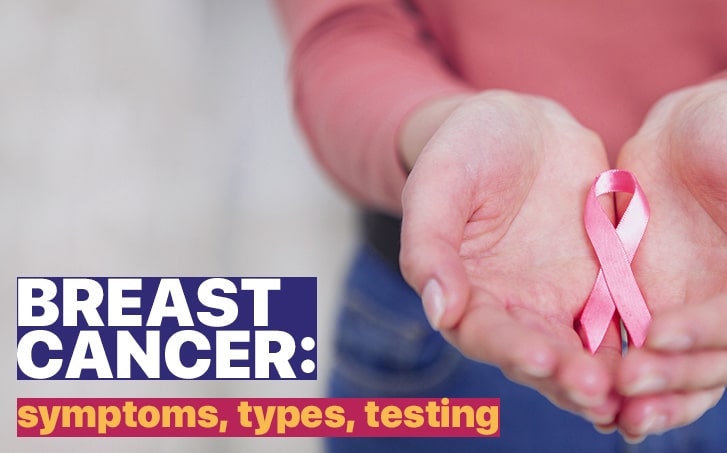
Four stages of breast cancer
Like other cancers, the pathophysiology of breast cancer progresses through 4 stages. The Sooner the diagnosis, the better is the treatment approach and faster is the recovery.
Based on the tumor location, involvement in the lymph nodes and spreading, TNM (tumour, node, metastasis) staging of tumor is performed. By staging cancer, your doctor gets a better idea as to –
- Where the tumor is located exactly?
- Is the tumor spreading (also called as tumor metastases), if so, spread to lymph nodes?
- What is the prognosis for the patient – chances of complete recovery and survival?
Breast cancer may or not involve hormonal involvement – estrogen, progesterone, and HER2. Based on the status of hormones and TNM, the doctor diagnoses breast cancer stages either as:
Stage 0 – Cancer at this stage is still at the origin of DNA error.
Stage 1 – Here, the cancer is confined to a limited area.
Stage 2 – In stage 2, breast cancer has begun to grow and spread through lymph nodes.
The treatment usually involves surgery and adjuvant chemotherapy (treatment after surgery aimed at trying to destroy any remaining cancer cells with or without radiation therapy).
Stage 3 – Stage 3A cancer marks the spread of cancer into the lymph nodes, the gateway to move into different parts of the body. Through stages 3B and 3C, cancer progressively spreads through more lymph nodes and invades the nearby tissues but not far away organs. Treatment options are similar to that of stage 2.
Stage 4 – At this stage, cancer has spread to at least one distant part of the body – such as the liver, lungs. The last stage 4B marks the spread of cancer into more than one part of the body.
Symptoms of breast cancer
Some commonly seen signs and symptoms of breast cancer are:
- Thickening or a lump within the breast, which feels different from the neighbouring tissue
- A change in the shape, size or appearance of the breast
- Dimpling or pitting of the skin of the breast, making it appear like an orange peel
- Inverted nipple, which was earlier not inverted
- Dark pigmentation or flaking and peeling of skin around the nipple or anywhere on the breast
- Change in colour of the breast skin like redness
Breast cancer treatments
The treatment options for breast cancer are based on the type and stage of breast cancer and other factors like overall health, age, and sensitivity to certain medications. The treatment options include conservative management and surgery, or a combination of both.
The conservative approaches include:
- Radiation therapy
- Chemotherapy
- Hormone blocking therapy
- Targeted therapy drugs
The surgical approach for breast cancer depends on the location and stage of breast cancer, as well as the risk factors in a particular patient. The oncologist/oncosurgeon will suggest the best approach, which includes:
- Mastectomy (removal of the entire breast)
- Axillary lymph node dissection (removal of several lymph nodes)
- Lumpectomy (localised removal of the breast cancer)
To know more about breast cancer and its treatment, you can request a callback and our cancer specialist will call you and answer all your queries.




